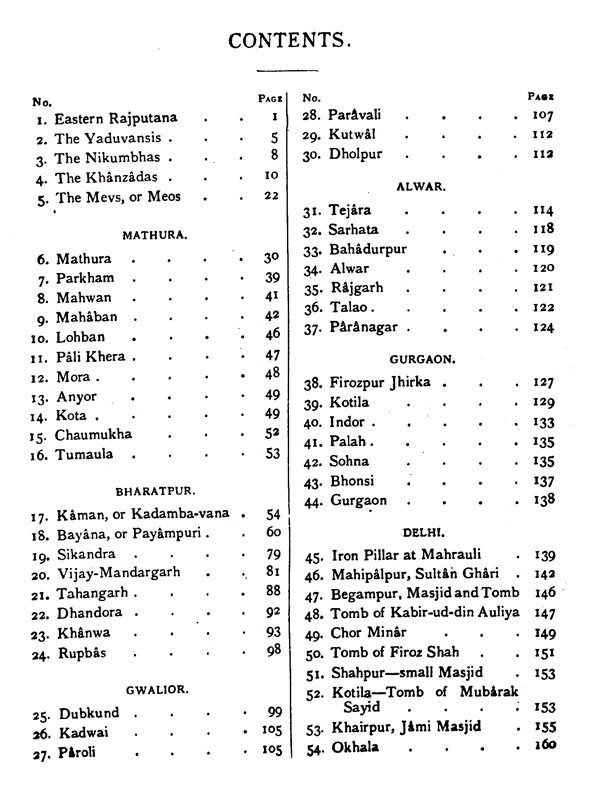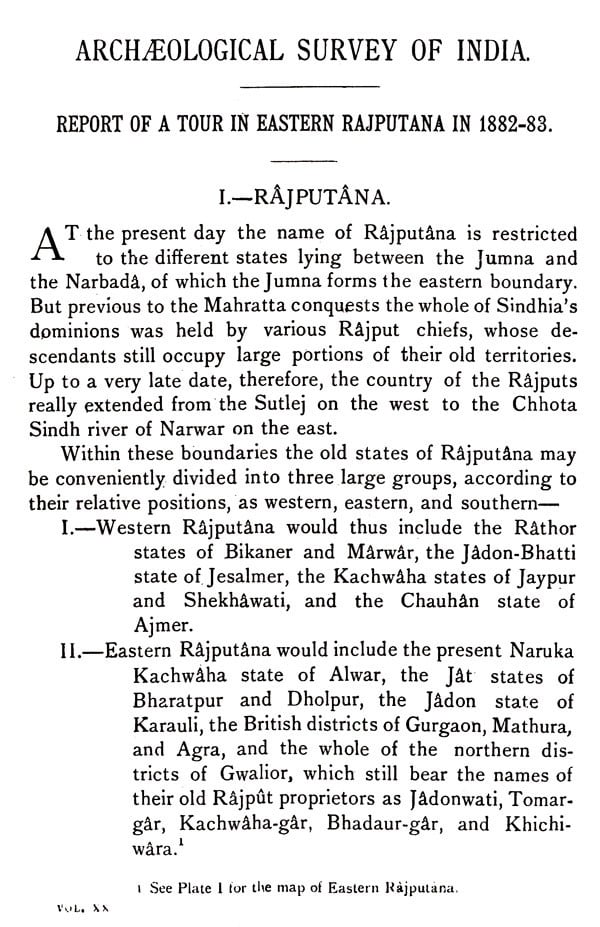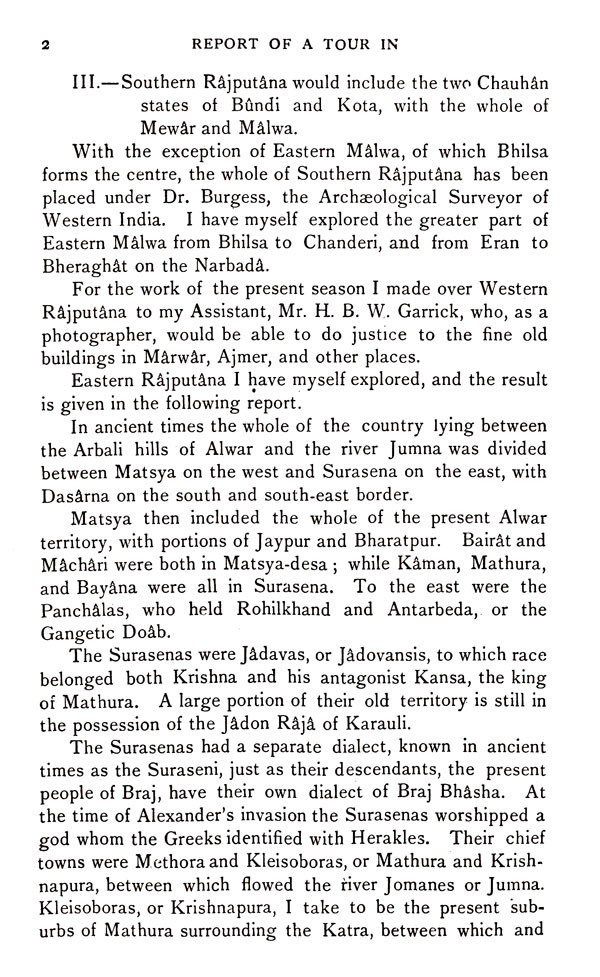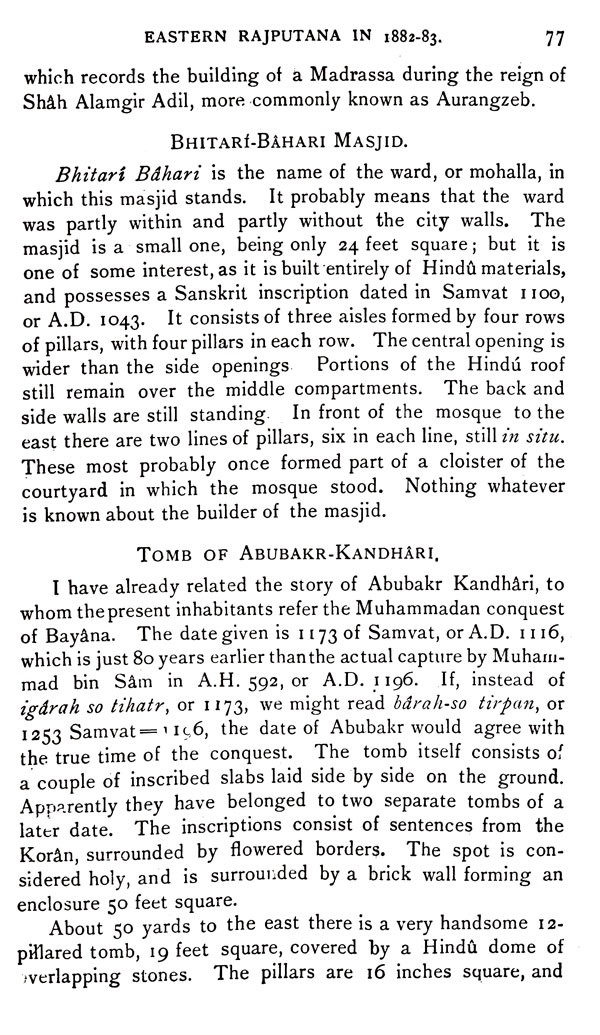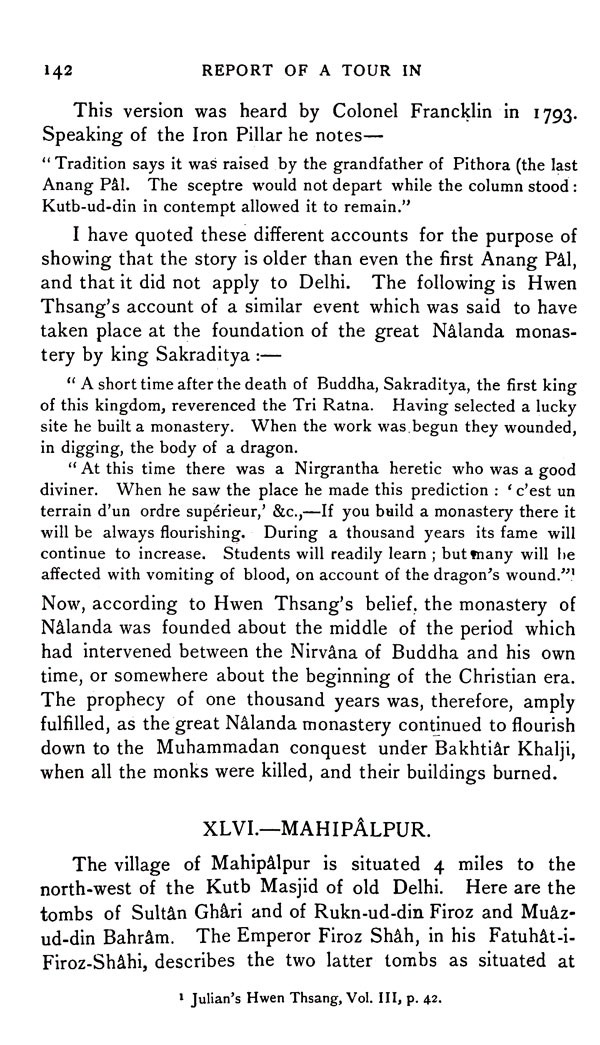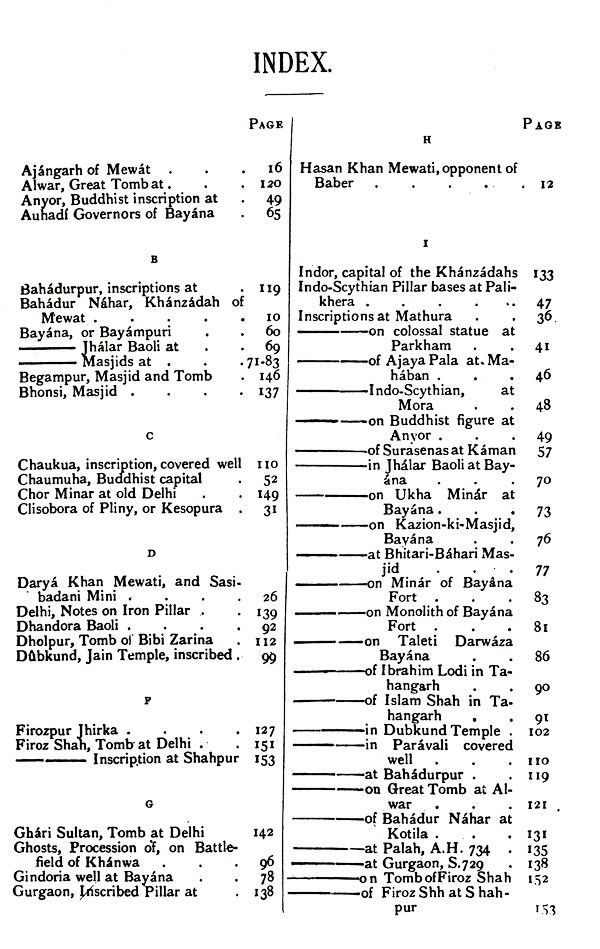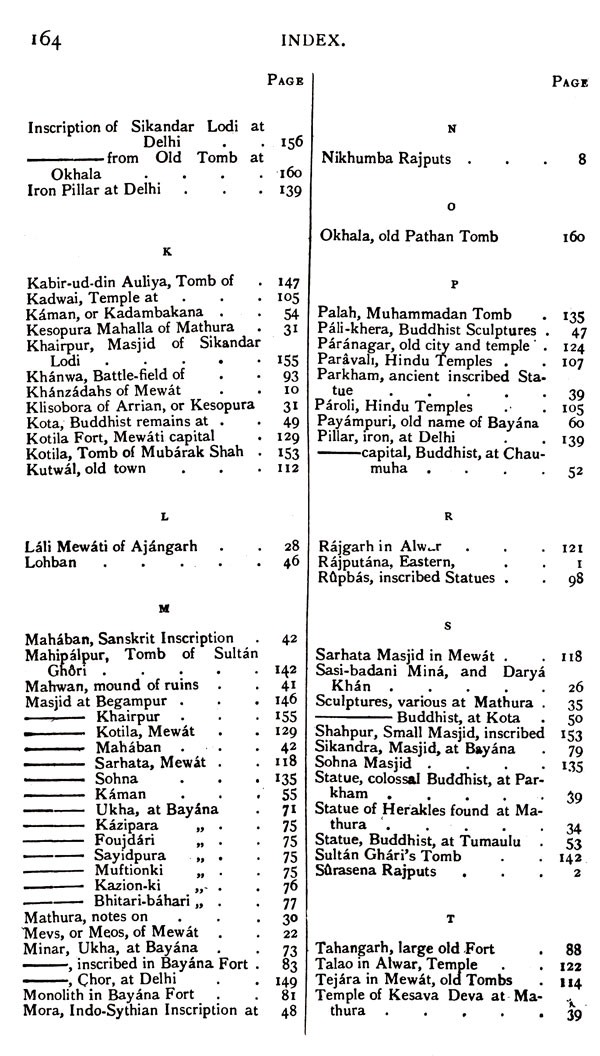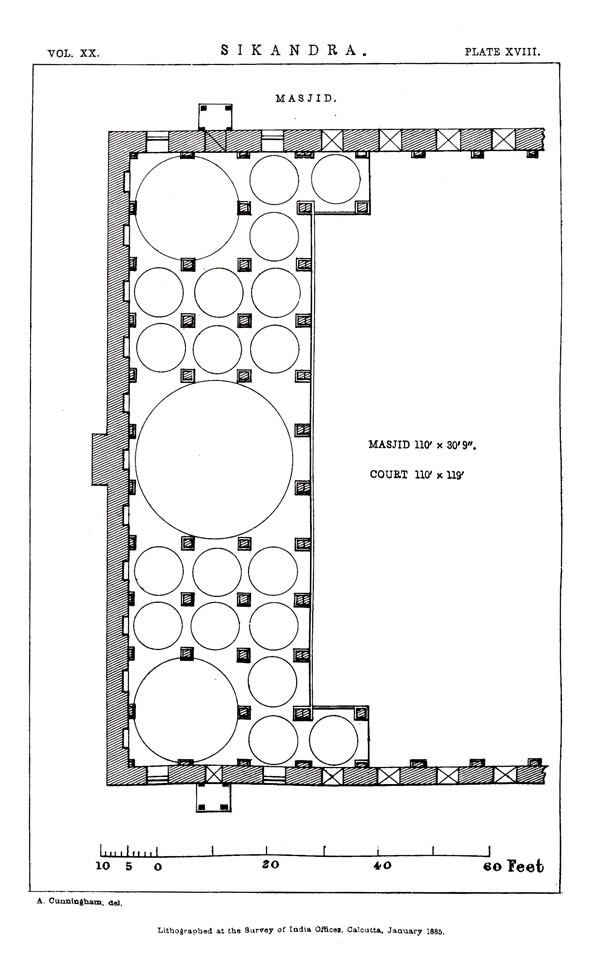
ASI Report of A Tour in Eastern Rajputana (Volume XX)
Book Specification
| Item Code: | AZB504 |
| Author: | A. Cunningham |
| Publisher: | Archaeological Survey of India |
| Language: | English |
| Edition: | 2000 |
| Pages: | 256 (Throughout B/W Illustrations) |
| Cover: | HARDCOVER |
| Other Details | 9.8 x 6.5 inches |
| Weight | 730 gm |
Book Description
DURING the cold season of 1882-83 I explored a great part of Eastern Rajputana, including portions of the states of Alwar, Bharatpur, Karauli, Dholpur, and Gwalior and the adjoining British districts of Delhi, Gurgaon, and Mathura.
In Alwar I visited the old capitals of Tejâra, Rajgarh, and Pâranagar, with the border forts of Indor, Sarhata, and Kotila, all of which have been famous for centuries in the history of the Meys, or Meos of Mewât. As Hindus the Meos often successfully resisted the arms of the Muhammadan kings of Delhi until the time of Feroz Tughlak, when they became converts to Muhammadanism. But in spite of their change of religion the Moslem Meos were just as turbulent as their Hindu ancestors—and they remained virtually independent from the time of Timur's invasion until the conquest of Northern India by Bâbar. Bahadur Khan Nahar, the founder of the Khânzâdah dynasty of Mewât, secured the favour of Timur by numerous presents, of which the conqueror chiefly prized a pair of white parrots, or cockatoos, which must have been at least 80 years old, as they are said to have been in the possession of Tughlak Shah.
The principal remains of the Meo Rulers consist of mosques and tombs. At Kotila I found a fine old stone mosque, standing on an elevated site, which was formerly occupied by a famous Hindu Temple. It was begun by Bahadur Nâhar himself in A.H. 795, and finished by his successor in A.H. 803, as recorded in the inscription over the entrance gateway of the enclosure.
**Contents and Sample Pages**
